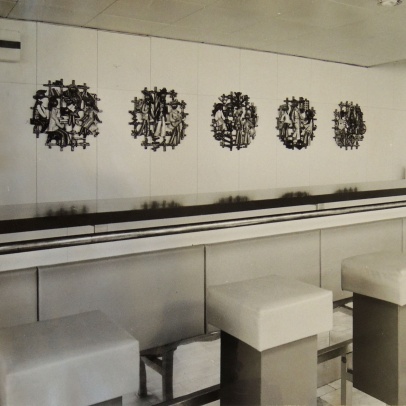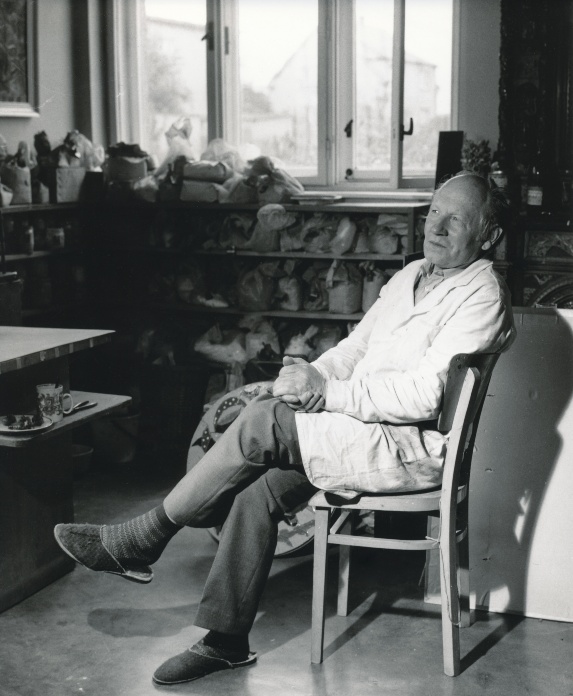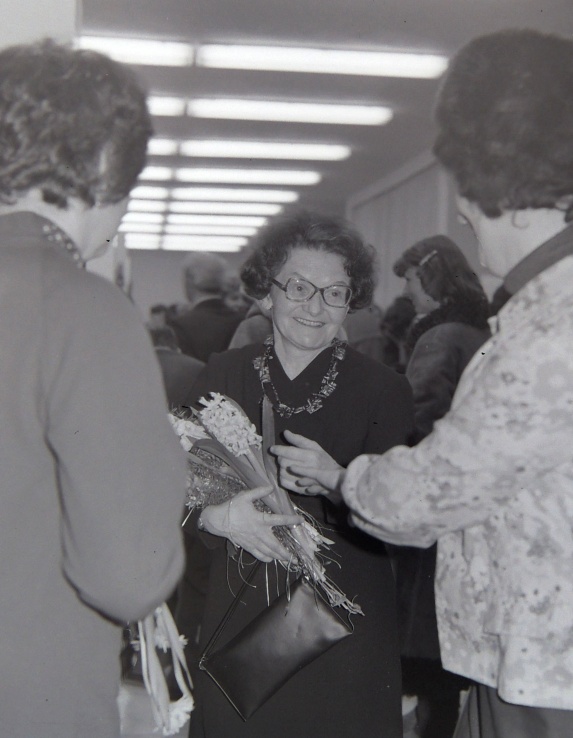Name: From the Life of Youngsters
Author: Eva and Bohumír Krystyn
Dating: 1979–1980
Location: originally in the bar in the student halls of residence in Ostrava-Poruba, today in the VŠB-TUO cafeteria
Execution: five circular reliefs made of glazed ceramics, each 60 cm in diameter
YOUTH LEISURE TIME IN THE UNIVERSITY CAFETERIA LOUNGE
Eva and Bohumír Krystyn decorated, using their own authentic artistic approach full of colours and naive style, several buildings designed for VŠB – Technical University of Ostrava. Although their works of art were most popular in kindergartens and primary schools, they found their place anywhere where recreation took precedence over work and serious themes – in the so-called Vítkovice Ironworks villa, the ROH (the national trade union centre in former Czechoslovakia) recreation centre, restaurants and sweet shops. The ceramic mosaic We Learn from Nature (now at the Faculty of Safety Engineering in Ostrava-Výškovice) was originally created for a primary school but became part of the university collection after the adaptation of the building for the University faculty. And the Krystyns’ works found their use in facilities with a similar purpose also directly on the VŠB-TUO campus.
First of all, the ceramic reliefs From the Life of Youngsters were created for the bar within the complex of the student halls of residence in Ostrava-Poruba between 1979–1980, although they were not installed until 1982 because the building had not been finished. Originally, five circular reliefs were hanging next to each other on the wall behind the bar counter, where the university students came to relax in their leisure time. Therefore, the simple puppet-like figurines reflect the leisure activities of youngsters – hiking trips in the countryside, cycling trips, literary encounters, discos, as well as dating and hanging out in a park. When the reliefs (probably already at the end of the 1980s) were moved for unknown reasons to a small lounge in the cafeteria building, where the youngsters can rarely see them, they lost their original connection to the student environment.


